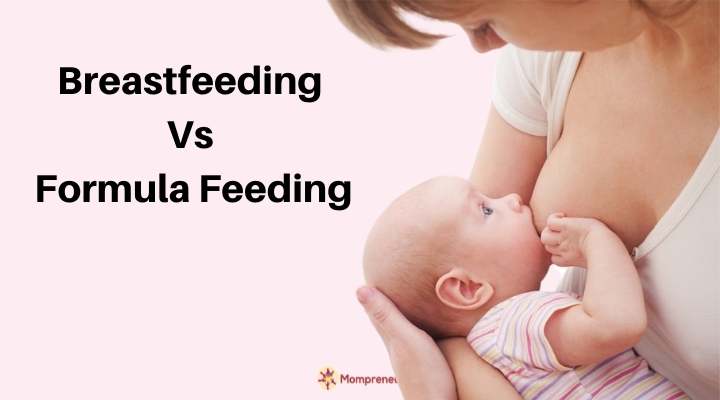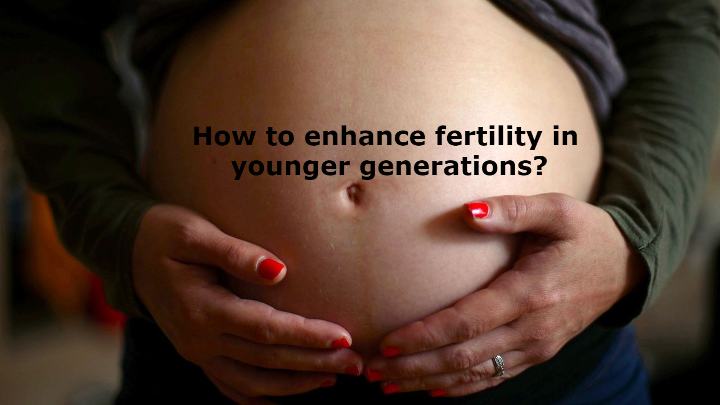Breastfeeding Vs Formula feeding – Which is right for your baby?

From decades now, there is this debate on which milk is best for the baby. Breastmilk is a complete food for infant with no need for formula unless it is medically advised by a doctor or a certified lactation consultant for the medically indicated reasons. Although it is purely a mother’s choice to decide the best for her baby. At the same time, it is equally important to educate her and her family regarding formula feeding and benefits of breastfeeding so that she can make her own informed decision.
Breastfeeding not just provides perfectly balanced nutrition, good immunity to the baby but there are researches suggesting that an early skin-to-skin contact and suckling may have physical and emotional benefits too. Breastfeeding may also reduce the risk for certain allergic diseases, asthma, obesity, and type 2 diabetes and help improve an infant’s cognitive development.
(1) Another research showed that both full-term and preterm babies who have been breastfed or had maternal milk feeding had benefits child neurodevelopment.
(2) It has numerous benefits to mother too from being cost free to reduction in chances of breast and cervical cancer. The American Academy of Pediatrics recommends infants are exclusively breastfed for about the first 6 months with continued breastfeeding while introducing complementary foods for at least 1 year.
(3) Whereas WHO recommends that infants should be exclusively breastfed for the first six months of life to achieve optimal growth, development and health. Thereafter, to meet their evolving nutritional requirements, infants should receive nutritionally adequate and safe complementary foods while breastfeeding continues for up to two years of age or beyond – WHO/UNICEF – 2003
Formula is a partially corrected milk for new born which may not have any important enzymes, antibodies and immunity for the baby. Formula rose to popularity in late 1800 and early 1900 and public began to see formula as scientifically superior to breastmilk. Mother’s with little education, used to mix formula with disease infested water or majority were unaware of or/ not following the hygiene routine to make formulas resulting in vast number of infant deaths from malnutrition (over-diluted milk) or infectious diseases. (CLE TM Module 8th edition 2011- CAPPA). Jan Riordan reports in Breastfeeding and Human Lactation, 2nd Ed., that breastfeeding rates went from 38% in 1946 (USA) to 21% in1956 to 18% in 1966. A women usually takes her decision of breastfeeding or formula feeding the baby by third trimester, well before they opt for any prenatal counselling sessions, and the message both explicit or implicit, that formula is safe and healthy Is one that has significant impact which can be seen in decreased breastfeeding rates ( Winikoff 1980; Howard, 2000).
In 1981 WHO adopted the resolution (WHO code) which declared that certain types of advertising/ promotion of infant formula are unethical, cause harm to infants and should be legally restricted in member countries. WHO also insisted more on baby friendly hospitals. This initiative, knowledge, support and education helped increase the rate of breastfeeding initiative to 4% in 2010 and Exclusive breastfeed at 6 months to 13% in 2010 and this increased to 58.3 % in 2017 ( healthy people 2020 Goal, CDC report card). Although it has also formulated guidelines for hygiene, preparation, administration, storage and transportation of artificial milk. ( can be referred to the WHO booklet / website in case of any medical need).
As per The WHO the first choice for infant feeding is always a baby being breastfed on breast, second mother’s own expressed milk, third being milk from another human mother and fourth and last choice is artificial baby milk. (WHO)Early initiation of artificial feed may lead to less supply which may lead to no supply in a few days. It’s because if a baby gets satisfied and full with formula milk, he/she will breastfeed less giving less stimulation to the breasts. Less stimulated breast will produce less milk as its all about demand and supply; and this can become a no-win situation very quickly.







